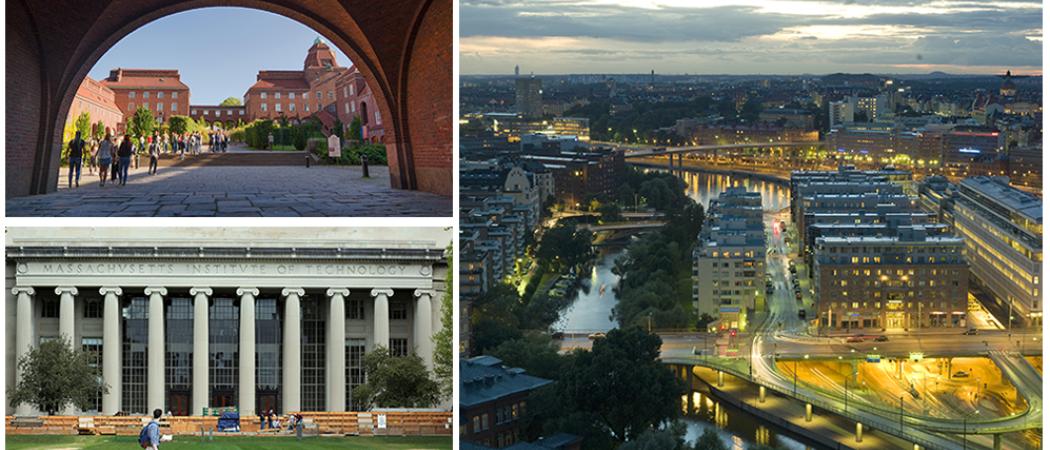Researchers on both sides of the Atlantic, together, will exchange ideas, decide and build the research that will be conducted based on what Stockholm city and other collaborative actors need

KTH together with MIT, one of the world’s highest-ranking universities, are now entering into a research collaboration around urban planning and development where Stockholm city is the focus. The hub for the research will be KTH-MIT Senseable Stockholm Lab.
“It is fantastic that we are starting such a broad, systematic and long-term cooperation. This type of interdisciplinary and international collaboration is very valuable. The fact that our research in architecture and community building is so successful that MIT wants to collaborate is, of course, also a feather in the cap,” says Sigbritt Karlsson, vice chancellor at KTH.
The joint lab will be located on KTH's premises and thus, has an obvious proximity to the city of Stockholm and the physical environment and the data will be investigated. The collaboration between the two universities is intended to extend over three to five years. In the spring, the joint lab will take shape and Stockholm city will, in turn, be part of the collaboration.
Together, we will seek answers, find patterns, mechanisms, analyze data about the city about important issues to find new solutions that can contribute to Stockholm's development and planning. Through various methods, we must find answers to the challenges that a growing city faces and where sustainability and technological development goes hand in hand.
“KTH and MIT match each other very well in this case and overlap one another research-wise. The fact that it is MIT is, of course, a bonus,” says Ann Legeby, professor of applied urban construction. She is one of the six researchers from the School of Architecture and Society at KTH, which is currently intended to be part of the collaboration.”
She emphasizes that the collaboration with MIT is based on co-creation, which means that the researchers on both sides of the Atlantic, together, will exchange ideas, decide and build the research that will be conducted based on what Stockholm city and other collaborative actors need.
The idea is that the cooperation as a whole should find new ways and methods for the smart city. This is with regard to, for example, transport, mobility, energy, water supply and behavior patterns that reflect what a city is through the use of large amounts of existing—and collection of—new data, as well as AI.
Anders Karlström, professor of transport modeling and social economy, says:
“We will look at the city’s welfare, how it is used, how the interaction and friction in the city is and how to create a better city with the help of technology, planning and design. AI becomes the lens with which we structure large amounts of data.
Daniel Koch, architectural researcher, establishes that as it is such a large investment that extends over several years, it provides an opportunity to take a holistic approach to the city and its challenges.
“The collaboration will drive knowledge development, and a new and more nuanced understanding means that, for example, urban planning can be adapted and become more precise.
The first area that the researchers will undertake is about segregation, where the two universities already have extensive research that can be further developed as a joint effort.
“The collaboration and proximity to MIT will also open new pathways and, in the long run, benefit our students,” adds Sigbritt Karlsson.
About the collaboration
MIT and KTH will together create a lab for research together with Stockholm city.
From KTH, six researchers from the School of Architecture and Civil Engineering are initially included.
From MIT, the work is led by Carlo Ratti, director of the MIT Senseable City Lab in Boston. A postdoc will also be included.
The co-operation, which extends over three to five years, is financed by KTH with two million a year for five years. Stockholm city contributes five million a year for three years with an extension for another two years after evaluation. Stockholm's Chamber of Commerce and the company Newsec contribute one million each for five years. On April 12, the cooperation is launched in the US and after that the work will start.
This release was first published 5 March 2019 by KTH.





 A unique international forum for public research organisations and companies to connect their external engagement with strategic interests around their R&D system.
A unique international forum for public research organisations and companies to connect their external engagement with strategic interests around their R&D system.